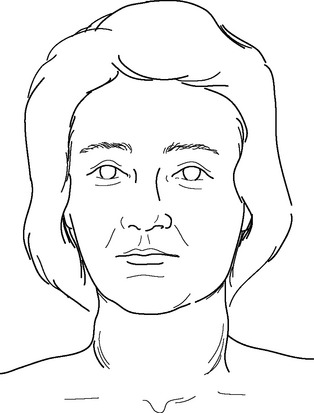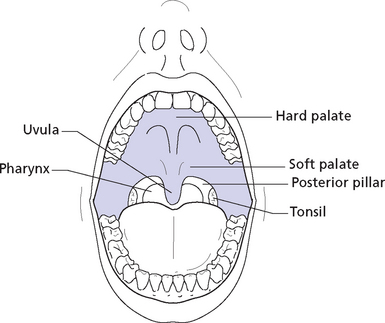Chapter 10 The pathways of the channels flowing through the neck are illustrated in Figure 10.1 and summarized in Box 10.1. The symptoms and signs related to throat and neck are discussed in Chapters 59 and 62 respectively in Part 5. Symptoms and Signs, Chapter 59 By ‘throat’ here is meant not the inside of the throat (pharynx) but a redness on the skin outside. Interrogation, Chapter 36; Symptoms and Signs, Chapter 59 The most common cause of goitre is Liver-Qi stagnation with Phlegm, usually occurring against a background of Spleen-Qi deficiency. It may also be caused by Phlegm and Blood stasis, Liver-Fire blazing with Phlegm or Heart- and Liver-Yin deficiency with Phlegm (Fig. 10.2). Symptoms and Signs, Chapter 59 To observe the pharynx, ask the patient to open the mouth; press the tongue down firmly with a disposable tongue blade, far enough back to get a good view of the pharynx but not so far as to cause gagging. Simultaneously ask the patient to say ‘ah’ or to yawn. Inspect the palate, the tonsils and the pharynx at this time (Fig. 10.3). If the pharynx is deep red on observation, it indicates Full-Heat, which may be exterior or interior. The inside of the throat may become red in acute invasions of Wind-Heat affecting the Lung channel and this is especially common in children. In interior conditions, a redness of the inside of the throat may be due to Full-Heat in the Lungs or Stomach and Intestines, the latter being more common in children. If the inside of the throat is pale red, this indicates Empty Heat affecting the Lung or Kidney channel, or both. Box 10.2 summarizes these pharynx signs.
 OBSERVATION OF THE THROAT AND NECK
OBSERVATION OF THE THROAT AND NECK
CHANNELS INFLUENCING THE THROAT AND NECK
THROAT
Redness on the throat
Goitre
Observation of the pharynx
OBSERVATION OF THE THROAT AND NECK






